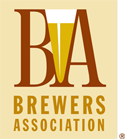How You Can Tell if You’re Drinking from a Dirty Beer Line

We’ve all been there before. You sit down at your favorite bar, order a draught beer, and take the first sip. Only something doesn’t taste quite right. It tastes . . . dirty. Or flat. Or simply horrible. But what does that mean?
First, some of the characteristic indicators of a “dirty” beer line are the same for “dirty” glassware. These indicators are:
- Quick loss of head retention
- Lack of legs forming and remaining on the inside of the beer glass
- Seemingly flat beer due to rapid loss of carbon dioxide gas
All of these factors are related, but they can be the result two unrelated causes—a dirty beer line or dirty glassware. So let’s clarify the difference in terms of “dirty.”
Defining a Dirty Beer Line
The State of Ohio describes a “dirty” beer line as one that has not been kept in compliance with Ohio Administrative Code 4301:1-1-28: Beer and wine: cleaning and sterilizing dispensing apparatus. Although this code goes into no detail about how lines should be cleaned, what methods and chemicals should be used, or what the actual risks to the consumer are if beer lines are not kept to standard, it does state that line cleaning must be performed “not less than once every two weeks.” Therefore, by Ohio law, a “dirty” beer line is one that has not been cleaned by a registered line cleaner in over 14 days. How would you know this? Simply ask to see a bar’s line cleaning log. By law, all bars must maintain a log of their line cleaning, which will be initialed and dated by an Ohio registered line cleaner every time line cleaning is performed.
So how is “dirty” different from beer line to beer glass? A dirty beer line will have sugar and protein residue built up inside. These residues may break off when agitated by the flow of beer, resulting in chunks or flakes in the dispensed beer. This is an ugly surprise to the beer drinker, and quite embarrassing for the bartender and bar owner. Even worse, these pieces of beer solids harbor films of bacteria, mold, and yeast that will quickly spoil the beer once colonies are established inside the line. Even if beer flakes are not dispensed into the glass, be assured that residues do exist in the lines of unkept tap systems, and microbial biofilms harbored by these residues will taint the flavor of draught beer, leaving a sour or dry, cardboard-like taste in the beer, along with a loss of malty sweetness. It is mainly a variety of acids that are detected as off-flavors when sipping a beer that has been spoiled by a “dirty” beer line. These acids also break up the foamy head of a beer, wash those sticky beer legs from the inside of the glass, and expedite the release of CO2 from a once sparkly beer. If you think you’re detecting any of these off-flavors, or if you make any of these visual observations, then you’re probably drinking from a dirty beer line.
Defining a Dirty Beer Glass
It is important to note that these same visual observations may also be made if clean beer is dispensed into a “dirty” glass. The flavor quality and sanitation of the beer will NOT be effected, so be careful before drawing any conclusions as to the cleanliness of the tap system. A “dirty” beer glass is any glassware that does not permit full contact of beer and glass. Beer sugars and proteins bind to glass resulting in full head retention and beautiful scaffolding of legs on the glass’s interior throughout the life of a pint, no matter how long or short that time may be.
So what could possibly get in the way of foamy head structure and leg formation on a glass’s interior? Well, anything else that sticks to glass. Sanitizers today, such as iodine, are designed to do just that in order to form a sanitary barrier between the glass’s surface and any potential airborne pathogens. This is great in terms of preventing the spread of foodborne illness; and this modern theory and methodology has been applied to all sectors of the food and beverage industry. Plates and silverware receive the same type of sanitary treatment, but the quality and presentation of food is unaffected by this. Rather it’s draught beer service that falls victim to modern sanitation methods.
If you suspect that sanitizer residue is killing the head on your beer, then ask the bartender to re-use your glass. Normally, a good first coat of beer on the inside of your glass will wash away sanitizer residue (consuming iodine will not hurt you) while laying a foundation for excellent head retention on your second, third, fourth . . . or fifth beer. If you notice improved head retention the second time around, then sanitizer was the culprit. Not a “dirty” beer line. This is more common than you may realize.
The second form of a “dirty” beer glass is one that is truly dirty. If it was washed with dirty water it will have an oily or greasy residue coating its surface, which repels water-based solutions like beer. This commonly results when bars do not change their wash-and-rinse water out frequently enough. This is also very common. Watch for a bartender’s or bar back’s attention to detail when running glasses through wash and rinse sinks, and also notice if glasses are being polished with a dry towel after washing and drying. The most important reason to polish is to remove any potential residues that will destroy the integrity of a quality draught beer.
In conclusion, if you order a familiar beer and it tastes and smells right, it is likely that you are drinking from a clean draught system. If you’re in doubt, look for visual indicators. And if you truly believe you’ve been served beer from a dirty beer line, ask to see the bar’s line cleaning log. Check that the date of their last cleaning is within two weeks. The date will be followed by the line cleaner’s initials and his or her 8-digit Ohio registration number.
Have any questions? Contact us today!



